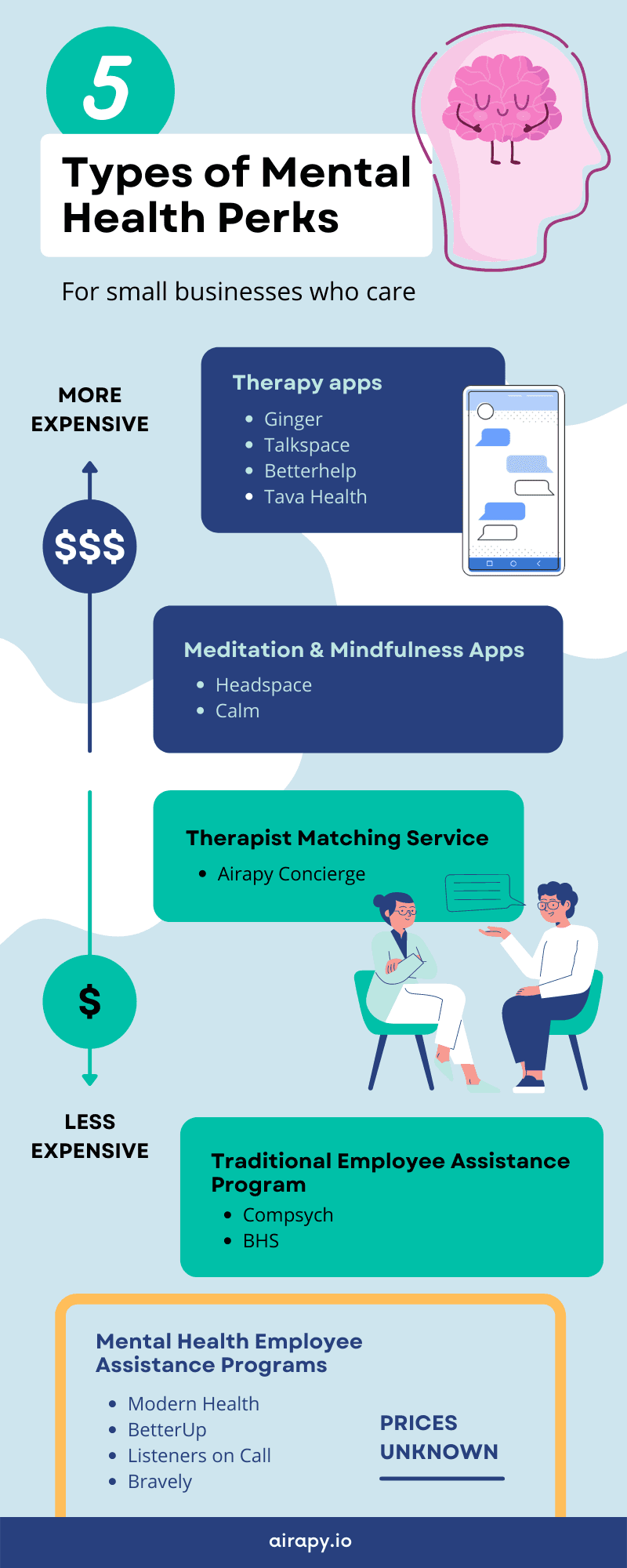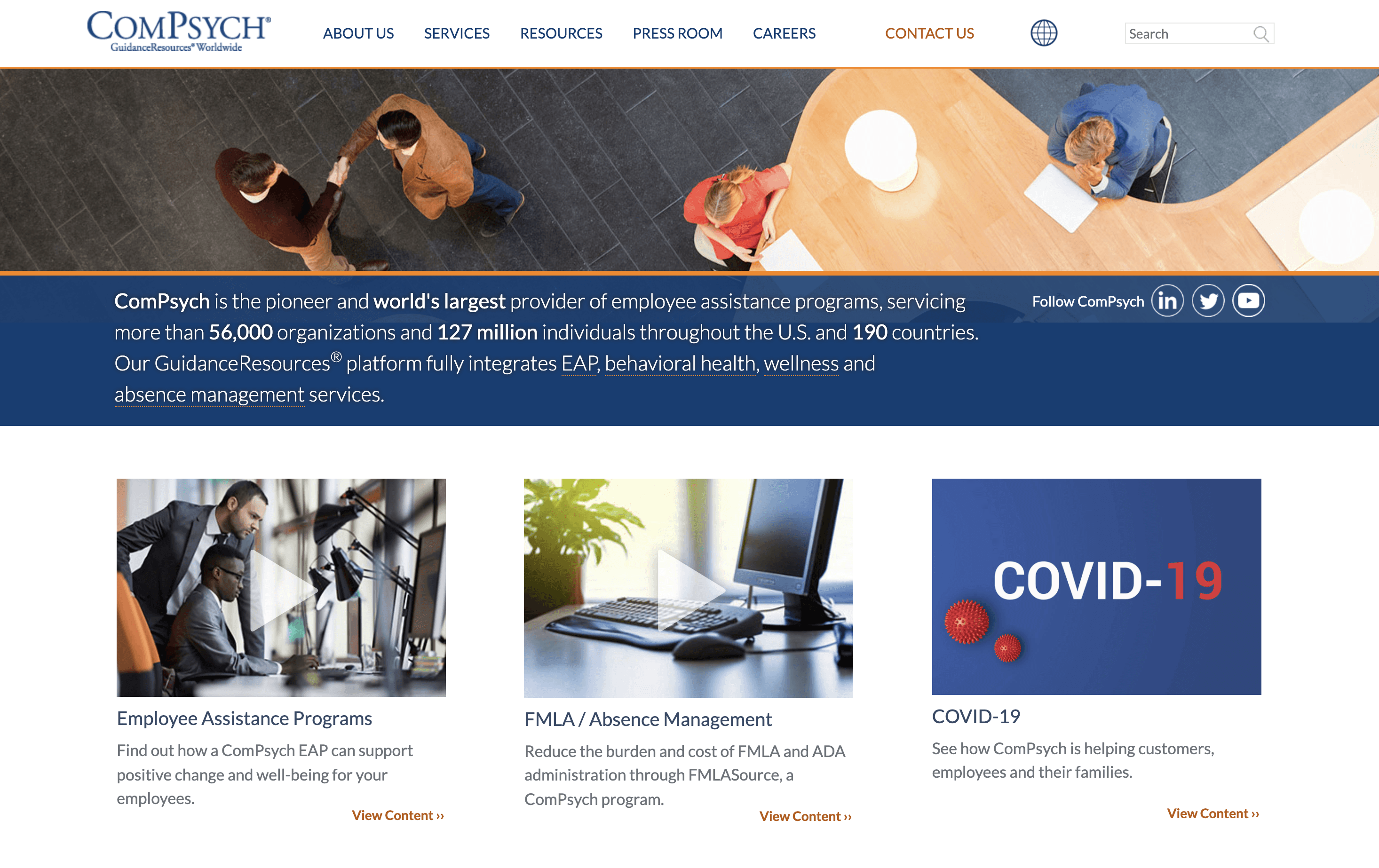Startups
July 18, 2022
So many mental health apps, so little time
The market is crowded with services who promise to be your mental health solution. Here's a quick guide to navigating B2B mental health services in 2022.
How we got here:
Before the global pandemic, therapy and mental health were not at the forefront of many organizations' long-term strategies.
But now that we've solidly landed in 2022, those looking to retain top talent need to understand this specialized corner of the benefits market.
Naivety can lead you to put your trust in smooth-talking charlatans who parrot wellness buzzwords but might not have your employees' best interests at heart.
The metrics of mental health
Are mental health care benefits a "must-have" or a "nice-to-have"? Depression and anxiety cost the global economy $1 trillion each year in lost productivity, according to the World Health Organization.
Work environments that support a culture of wellness and mental health awareness are more likely to benefit from improved productivity and reduced absenteeism.
Additionally, SHRM reports that 68 percent of employees would hesitate to reach out about a mental health issue because it could negatively impact their job security.
Even before the COVID-19 pandemic, the U.S. suicide rate had been slowly climbing, rising 30% between 2000 and 2016, and is currently the second leading cause of death for those ages 10-34. Those numbers can be quite terrifying, especially if you have children at home or early-career adults amongst your staff.
When viewed from this perspective, wellness perks can quickly move from being a "nice-to-have" to a "must-have."
Because even if your organization offers generous mental health care coverage,
Are your employees able to access therapy?
Are there enough available providers in your area?
Do they know how to find a therapist?
If so, have the therapists called them back or returned their emails?
It is notoriously difficult to find a therapist right now, and it's expected to get worse.

The following is an honest look at some of the various mental health and wellness services available as employer-based benefits.
Therapy apps
Therapy apps like Talkspace and Betterhelp are enticing because they seem like a simple solution: Every employee who needs therapy can access it.
This is true in the sense that they never run out of therapists. However, they don't advertise that the service they sell is less talk therapy and more like DMing with a good listener.
Talkspace's most budget-friendly subscription allows you unlimited chat with your therapist, with no live sessions, for $276 per month for individual membership. You will be paying significantly more to actually speak with someone virtually.
This focus on chat instead of conversation upset the American Psychological Association so much that they canceled Talkspace's advertisements in their magazine in 2018.
A therapy app might be just the solution for a large organization looking for something familiar and easy to use.
Some data indicate they are seeing improved business outcomes: AbleTo reports that its customers have experienced a 55% reduction in absenteeism since providing their service to employees.
These benefits can come with a hefty price tag: Ginger has an annual minimum cost of $30,000 for organizations, and Betterhelp costs $220 per month per user. Tava Health charges $2 per month per employee plus $75 for each individual therapy session.
Employer Assistance Programs (EAPs)
EAP packages often contain a limited amount of therapy sessions per employee (usually 6 to 8) and access to wellness events or prepackaged content.
EAPs get a bad rap for being old-fashioned and clunky, and for good reasons.
Take a look at the homepage for the world's largest provider of employee assistance programs, Compsych

Human resources managers that I have interviewed have had some choice words about the EAPs they have used:
"We have horror stories about our current EAP."
"I've seen this at every company I've worked for – they are not cool or user-friendly."
The other con to paying for an EAP is that very few employees use the services: national usage rate is just 3-6%. This expectation is built into the EAP business model and easily explains why they are hard to access and unpleasant to use.
This business model still exists because it's cheap and it's the easiest way to administer a raft of supplemental benefits for large organizations. One of the more highly recommended EAPs, BHS charges an affordable $3,000 annual rate for up to 100 employees.
If you decide to test drive an EAP, make it work to your advantage. Ask for a demonstration before signing the contract.
Remind employees regularly how they can access these services, and familiarize yourself with how they work. Showing you understand the process and making recommendations will give others an incentive to try them.
Another thing to keep in mind: what do you tell your uninsured employees when they run out of EAP therapy sessions? Many therapists don't like to work with EAPs because their compensation rates are so low. Compsych only offers therapists $35 per session unless they negotiate for a higher rate.
The new kids on the block
The good news is that there is a new crop of beautifully-designed mental health services with B2B business models that seem much easier to use, although they don't always provide therapy.
Pricing is not available on their websites, so you'll have to schedule a demo or email them to find out the cost.
Both Modern Health and BetterUp feature mobile apps and provide employees with coaches, therapists, and wellness courses.
Listeners on Call is a peer-based support network. Bravely eliminates therapy entirely, instead focusing on tech-enabled coaching services.
Meditation apps
There is another type of service to consider: meditation and mindfulness. These two practices are often lumped together because they are naturally complementary and lie outside the realm of traditional medicine.
Meditation uses focus to increase calmness, concentration, awareness, and emotional balance. Mindfulness is the simple act of paying attention and being present in whatever you're doing.
Because they're not therapy–which has to be tailored to individual experiences, meditation and mindfulness fit neatly into asynchronous content packages.
I have personally used a daily 10-minute meditation to relieve ongoing pain caused by stress so I can attest to its value and longevity. The ability to successfully meditate is something you can carry with you and use throughout your life.
Existing B2C businesses like Calm and Headspace have recently expanded their offerings to include webinars and regular check-ins for organizations that want a more comprehensive service. The cost for these services is comparable to an EAP.
Finding a therapist
What if you just want to ensure that employees can find the help they need without all the bells and whistles? Airapy's concierge service is a simple and affordable solution. Their therapy concierges can find the best available therapist for each client and assist them with booking their first appointment.
Conclusion
There are dozens more mental health services out there besides those listed here–a more complete list can be found on Airapy's Mental Health Resources page. We also suggest you ask your professional networks and associations for recommendations and testimonials.
When considering a new mental health benefit, keep in mind one thing: one-on-one talk therapy is incredibly expensive when it's not being subsidized through insurance. If the service you're considering seems too good to be true, it probably is.







